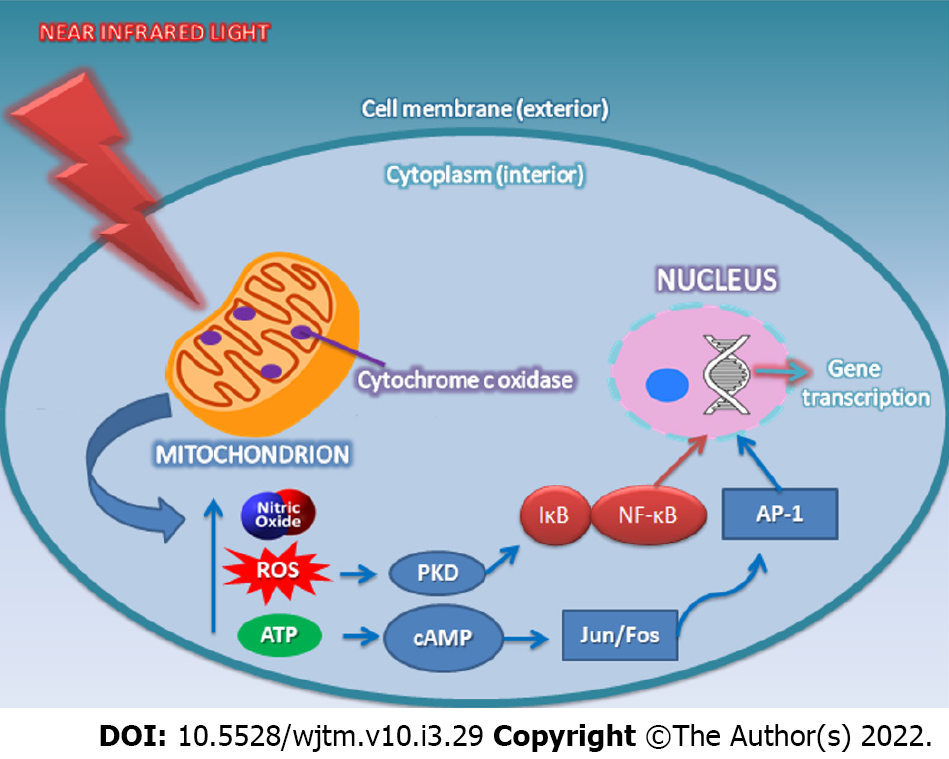The Facts About Photobiomodulation Uncovered
Wiki Article
Photobiomodulation for Dummies
Table of ContentsAbout PhotobiomodulationPhotobiomodulation Can Be Fun For AnyoneGetting My Photobiomodulation To WorkPhotobiomodulation - Truths
Laser treatment is a clinical therapy that utilizes concentrated light to promote a procedure called. During PBM, photons enter the cells and engage with the cytochrome c complex within mitochondria. This communication activates an organic cascade of events that causes a rise in cellular metabolic rate, which can in addition to accelerate the healing procedure.There is consensus that the application of a healing dosage of light to damaged or dysfunctional cells causes a mobile action mediated by mitochondrial systems. Photobiomodulation. Studies have actually shown that these adjustments can affect pain and swelling, along with, cells fixing
Adjustments in ATP, responsive oxygen varieties and nitric oxide adhere to light absorption by Cc, O. These impacts are redox state and dosage reliant.

Photobiomodulation Fundamentals Explained
PBM devices have actually been cleared for advertising and marketing by FDA with the Premarket Notification/510( k) process as adjunctive tools for the short-term alleviation of pain. These clearances were based upon the presentation of clinical information to support such insurance claims (Photobiomodulation). In this therapy, a light is put near or touching the skin, enabling the light energy (photons) to penetrate tissue where it communicates with chromophores located in cells resulting in photophysical and photochemical modifications that lead to modifications at the molecular, cellular and cells levels of the bodyRemarkably, recent research suggests that light can improve efficiency in typical tissues and cells. The potential applications of PBMT are countless and are being explored experimentally at the basic scientific research, pre-clinical and medical degree. The present medical uses are for the alleviation of pain and swelling and the treatment of sporting activities injuries.

The treatment criteria and number of sessions needed for PBMT are dependent upon area and cause. PBMT typically requires even more than one therapy for optimum pain relief.
The Definitive Guide for Photobiomodulation
Therapy parameters for PBMT were originally developed using cells in vitro and in little animal models. These therapy specifications usually had a low irradiance and fluence and functioned well for cutaneous applications. When clinicians started to use PBMT to deal with frameworks that were situated deeper in the body, they used these criteria with unfavorable outcomes.
We currently recognize that these unfavorable studies resulted from wrong tool and treatment criteria for transcutaneous therapy of deeper frameworks. Current breakthroughs in laser treatment devices and even more research study right into the ideal dosages have considerably enhanced the outcomes of PBMT. For treating deep tissues, the wavelength of light utilized determines the deepness of infiltration into a cells.
It is important that a clinician uses the proper wavelength of light and parameters to deal with a condition. One wavelength and one set of therapy criteria will not work for all conditions. Unfavorable adverse effects have not been reported from making use of PBMT (Photobiomodulation). Updated June 27, 2016Juanita j
Light therapy is a non-invasive treatment that works by boosting the ability of the cell to create energy (ATP) to heal the location being dealt with. Consequently, it can lower swelling, swelling, and pain in the location. Research around is broadening, with more in-depth study papers linked listed below for those that wish to discover more.
Unknown Facts About Photobiomodulation
In the initial experiment, Dr. Endre Mester, made use of cut rats and observing just how the this hyperlink laser influenced their ability to grow hair compared to the group that was not getting LLLT. He located that the group of computer mice getting LLLT had the ability to expand their hair back faster than the team of computer mice that really did not get LLLT (Hoon C, et alia; 2012).This therapy is described this means to distinguish the difference between the lasers some occupations utilize to cut (eg. Low-level light therapy is painless, non-invasive treatment.
LLLT has a biphasic response, implying that reduced dosages are usually attended be extra advantageous than greater dosages. That being claimed, dosages greater or click this lower than the ideal dose does not affect (Hoon C, et al; 2012). For this factor, it can be tough to have research studies on LLLT with numerous specifications.
Some business integrated both (LED and laser) to offer a much more all-around therapy since lasers can pass through much deeper than LED and infrared light (Norman Doidge, The Brain's Way of Recovery, 2015). Throughout treatment, the area that is being dealt with is subjected to LED light from a Bio, Flex Laser, which is at 660 nm wavelength, adhered to by infrared light at 830-840 nm wavelength.
Report this wiki page